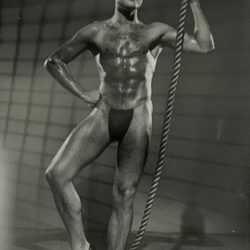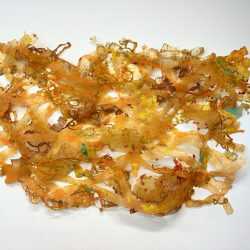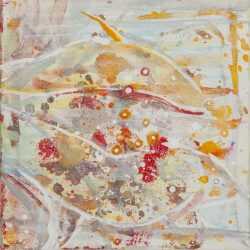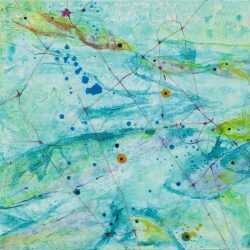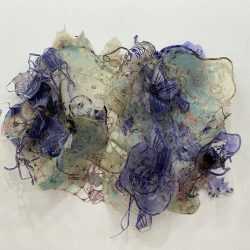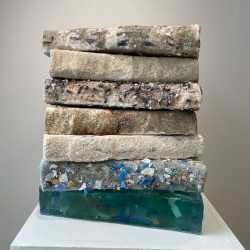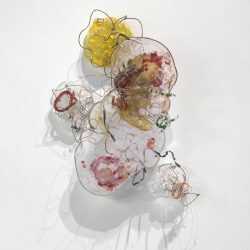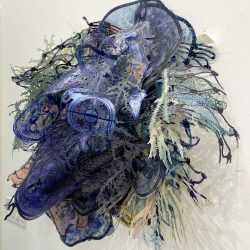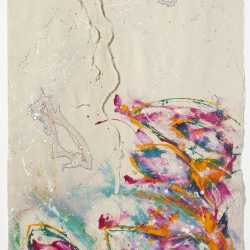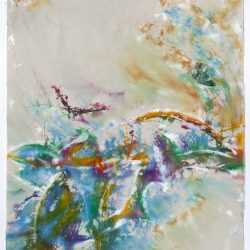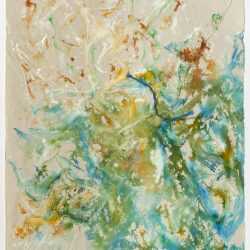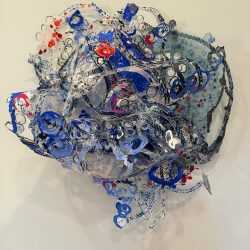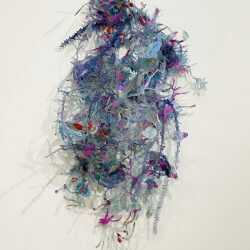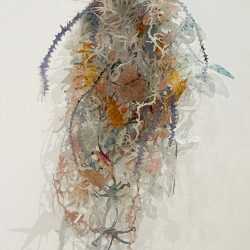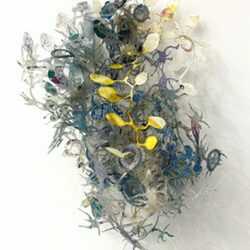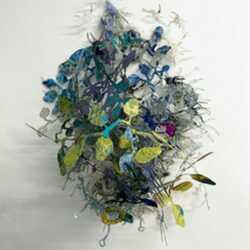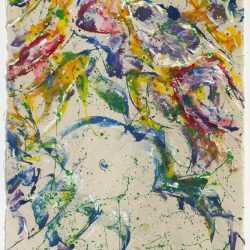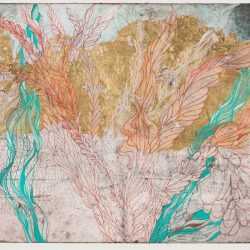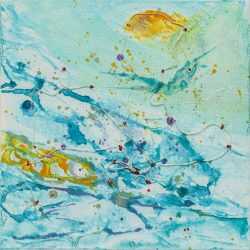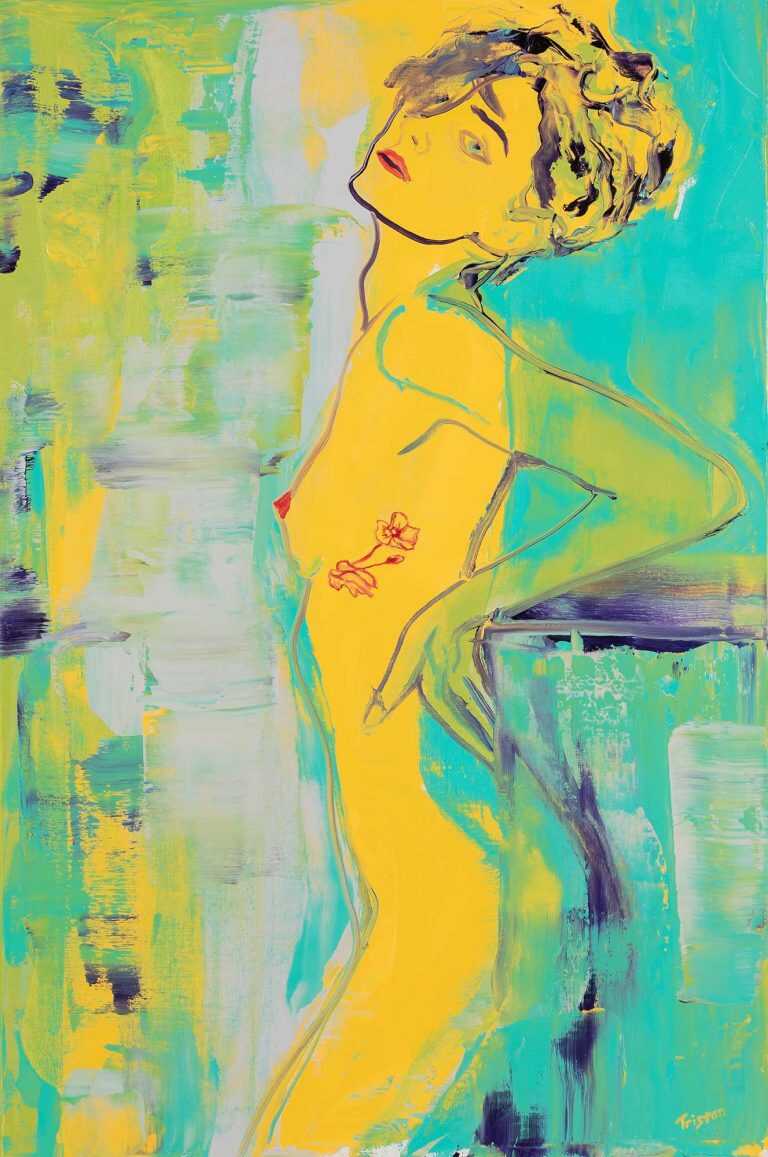Filter by Type
Filter by Category
Filter by Size
Filter by Year
Exhibitions
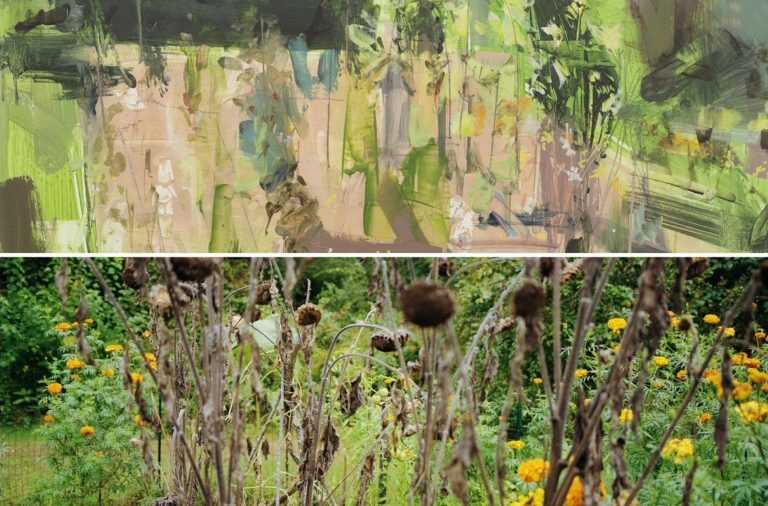
Intimate Structures: Sean Flood & Jillian Freyer
Press Release:
Intimate Structures pairs the work of partners Sean Flood and Jillian Freyer in conversation around the spaces and moments that shape and inform our lives. Flood's paintings and Freyer's photography both explore diverse environments – those we inhabit, those we create, and those we desire – and how these places reflect back upon us. The exhibition alternatively exudes both energy and quiet, juxtaposing scenes of bustling cities, cacophonous symphonies, peaceful gardens, and familial gatherings.
By considering the work of Flood and Freyer in parallel, the exhibition reveals a unique dialogue between the two, one propelled by the sharing of space, both artistic and personal. The two artists enjoy a creative relationship, producing art alongside one another that speaks to the world they inhabit and experience both together and as individuals. While Flood and Freyer each focus on their own interpretations of their environs, both create work that feels personal and intimate, whether depicting peaceful moments or crowded scenes.
Feeling a deep connection to his environment, Flood builds his paintings and prints through layered moments of movement, pace, and sound, captured over time experienced in specific locations. The exhibition includes Flood's familiar cityscapes, alive with buzzing energy, but also features new ventures into more intimate settings, including Boston Symphony Orchestra rehearsals and his family's backyard garden. The BSO provides a sort of synesthetic experience for Flood, in which music inspires his application of paint. In these sessions, the artist hears new compositions and instrumental experimentations that fill the room and, subsequently, his canvas. Flood's verdant home garden images mark a transition from city living to more suburban spaces, with room to grow for flowers, vegetables, and family. Flood notes that he sees the development between the garden and his family as intertwined – each year they flourish a little more.
Freyer is drawn to the secret moments and sacred sites that comprise our most personal worlds. Through her photographs, she creates the places in which she wants to exist – composites of experiences both lived and hoped for that become enchanting liminal spaces between the real world and her camera lens. In imagining new worlds, Freyer also examines how ours fits together, focusing on natural cycles and ephemeral moments like the bending of a back, the clasping of hands, a hazy sunrise, or the turning of autumn leaves. The mundane, the overlooked, the vulnerable, and the simple attract Freyer's eye with their richness for unexplored inspiration, and their revelation of the quiet framework of our daily lives.
In Intimate Structures, both Flood and Freyer offer their unique perspectives on the formative influence of place. While each artist's work stands independent of the other, the exhibition allows the viewer to consider the two in tandem, revealing fascinating glimpses of a shared life and shared experiences within the artists' two bodies of work.
Intimate Structures: Sean Flood & Jillian Freyer will be on view in our main gallery space, September 19 through November 16, 2025. Please join us for an opening reception with the artists, Friday, September 19, 6-8pm.
Included Works
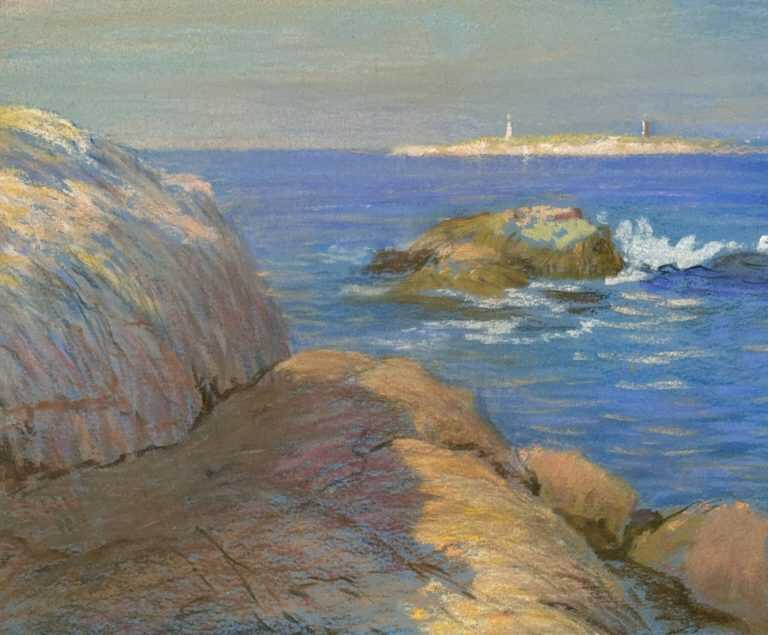
Impressions of the North Shore
Press Release:
The Massachusetts North Shore has long been an artistic haven - a picturesque stretch of coastline from Boston to New Hampshire encompassing scenic beaches, quaint towns, and charming harbors. Impressions of the North Shore brings together four prominent artists working along the coast during the late 19th and early 20th centuries, Gertrude Beals Bourne, William Partridge Burpee, C.E.L. Green, and Edward A. Page, who captured the alluring beauty of the area in paintings, watercolors, and pastels.
The wide beaches, tidal marshes, and working fisherfolk of the North Shore drew in artists Burpee, Green, and Page, who painted impressionistic renditions of coastal scenery to much acclaim. These three artists, along with Nathaniel L. Berry, Edward Burrill, T. Clark Oliver, and Charles H. Woodbury, would eventually be termed the 'Lynn Beach Painters' – a group working in the area during the last two decades of the 19th century in a similar, regionally developed, style of impressionism. A generation later, Boston-based watercolorist Gertrude Beals Bourne would continue to produce works based upon the unique beauty of the North Shore, with depictions of marshlands, fishing towns, and tidal flats, influenced by her studies of contemporary European and American masters.
Impressions of the North Shore will be on view in our upstairs gallery, August 8 through September 28, 2025.
Included Works

Don Joint: Manufactured Gods
Press Release:
In Manufactured Gods, multimedia artist Don Joint reflects upon the eroticism of ancient mythology through contemporary models posed as heroes and deities from antiquity. Showcasing the artist's work in cyanotype and collage, the exhibition is an unabashed display of male sensuality framed within the context of pre-Christian mores, in which sexuality and reproductive processes were seen as a part of religious and normal secular life. Nudity and phallic symbols were frequently found in public art and positively associated with prosperity, fertility, protection, guidance, and luck.
Manufactured Gods is Joint's second solo exhibition at Childs Gallery. His first, Narcissus, similarly looked to myth for inspiration, specifically that of the Boeotian hunter who wastes away after glimpsing his irresistible reflection in a pool of water. In Manufactured Gods, Joint expands his cast of characters to include other notables from history and legend: Hadrian's deified lover Antinous, Alexander the Great's general and companion Hephaestion, the dolphin-riding musician Arion, as well as various powerful, yet unnamed gods and other anonymous figures whose honed, disrobed bodies recall the sinuous lines of antique statuary.
The exhibition highlights Joint's interest in cyanotype and collage. Combining found letters, objects, fabrics, handmade papers, and photographs, Joint carefully constructs his own personal deities and mythologies. Many of Joint's works make use of cyanotype, an early photographic process in which chemical solutions exposed to ultraviolet light produce images in a startling shade of blue. The cyanotype medium neatly ties Joint's Classical themes with the modern era, and its vivid hues further recall the Mediterranean's sapphire waters and lapis lazuli stones favored by ancient Egyptians and Mesopotamians. Joint uses cyanotype as a modern form of apotheosis – his mere mortal models become eternal, otherworldly deities, ready-made to be worshiped by the viewer.
Joint's pantheon of nubile, young gods are frank in their sensuality, with direct gazes and brazen nakedness, but they also speak to deeper meanings and hidden stories, sometimes referenced in a cheeky or vague title, to be puzzled out by their audience of devotees. They are gods of fortune, guardians, psychopomps, and liminal deities who beckon for their due reverence through the timeless rites and rituals of observation and adoration.
Don Joint: Manufactured Gods is on view at Childs Gallery July 18 through September 14, 2015. The gallery is hosting an opening reception with the artist on Friday, July 18, 6-8pm.
Included Works

Dress Up: Fashion in Art – Online Exhibition
Press Release:
Fashion communicates much as words do. It tells a story.
In this collection of fashionable art, you'll find perfectly articulated kimonos in the woodblock prints of Katsushika Hokuyo, inky dark dress folds by Letterio Calapai and Jared French, George Platt Lynes' ingenious lighting of layered taffeta, vibrant traditional Mexican garments represented by Carlos Merida, the illustrative styling of Jacek Von Henneberg, and the everlasting elegance of Robert Freeman's cocktail attired subjects.
Peruse through Dress Up: Fashion in Art like an issue of Vogue. The exhibition is available to view on our website through July 31, 2025.
Included Works
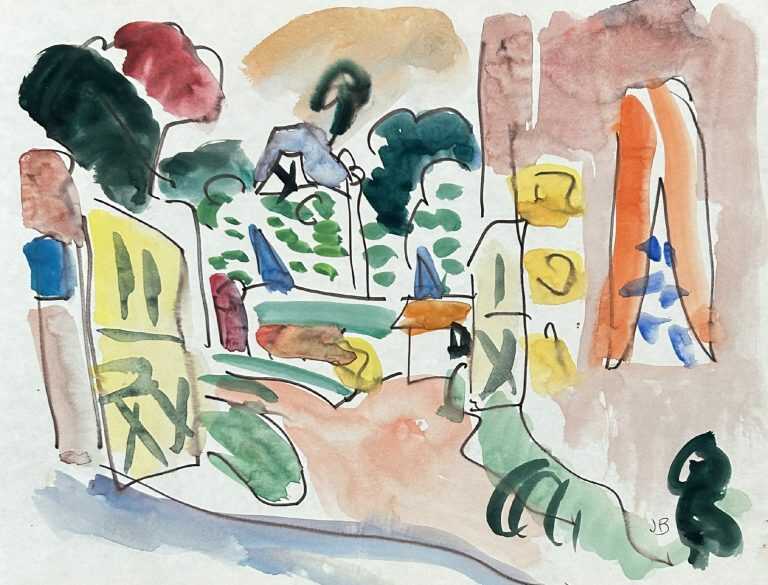
Joie de Vivre: Jason Berger Watercolors
Press Release:
Boston Expressionist painter Jason Berger is revered for the vivid colors and startling immediacy of his vibrant works. Though best known for his paintings, Berger also worked in watercolor throughout his career, capturing, both en plein air and in the studio, brightly energetic renditions of the landscapes, houses, cities, and gardens from favored locales both near and far.
Joie de Vivre: Jason Berger Watercolors celebrates the joyful spontaneity of the artist's works on paper. The watercolors detail scenes from Berger's life in New England and Portugal – his homes and favorite haunts in Boston and the sundrenched cities of the Algarve region. The exhibition also surveys lush and brightly colored settings in France and Mexico – areas to which Berger would return frequently in his travels. Joie de Vivre: Jason Berger Watercolors is on view in our upstairs gallery space June 6 through August 3, 2025.
Included Works

The Moon Visits
Press Release:
The Moon Visits is a new group exhibition of paintings, prints, photography, sculpture, and art objects, celebrating Pride Month through trans, queer female, and other gender identities, guest curated by longtime Childs Gallery artist, Hannah Barrett. The exhibition gathers the artist's friends and compatriots in a delightfully discordant grouping of enigmatic liaisons, tender moments, quiet scenes, and curious oddities.
Barrett describes the exhibition as such:
'The Moon Visits' presents the work of eighteen artists of varying degrees of connectedness and weirdness, including artists affiliated with Childs Gallery, based in Boston or nearby, and/or within shared artistic circles. The title is taken from Nancy McCarthy's painting 'The Moon Visits the Fortune Tellers,' a mysterious image in which two flamingos at a table with a crystal ball are joined by a yellow orb. There is a story here as there is behind each object in the show, or in some cases it's a riddle, a trace, an enigma, a cypher, or a surprise. There are vintage cars, prudes, perverts, ornate and derelict interiors, geometry, astrology, gay constructions, mixed media brews, printed flowers, and of course, flamingos. The moon is a big personality, and it can be a pain, but it's also a feminist, a witch magnet, the menstrual cycle, all things crazy, a beautiful nightlight, lesbian, queer, and trans.
Once you peek beneath the hood of 'The Moon Visits,' some common currents assert themselves by theme or media. In the esoteric realm: Natalie Hays Hammond's needlepointed astrological signs, Xylor Jane's pyramid of nested primes, and Laurel Spark's 'Beaver Moon.' There are lots of people, including Helen of Troy by Louise Nevelson, out of bounds tourists at the Doris Duke Foundation by Tony Bluestone, Gabrielle D'Estrées and her sister by Catherine Kehoe, the altered Kewpie and his bad boy alter ego after Christian Schad by Caleb Cole, the classic Butch mechanics by Lizi Brown, scenes of counterculture domestic bliss by Opal Ecker DeRuvo, and the typical family portrait (yours truly). Deborah Bright's 'Dorian' is in a class of its own, headless with leather jacket and channeling Betty Parsons. Spooky rooms are represented by an elegant staircase and ethereal chair by Mara Baldwin, as well as formal interiors reclaimed by nature in Shellburne Thurber's '9 Wellington' photographs. Along abstract and constructed lines: a cubic valentine by RJ Messineo; a wire, toothpick, and scrap wood wall sculpture by Molly Zuckerman-Hartung; small raft like objects made of sticks and other things also by Mara Baldwin; and Laurel Spark's cookies dangling from garlands. Two artists reinterpret flora: Nancy Haselbacher presents two photographs of plant matter from the forest floor reverse printed to suggest old negatives, and E. Lombardo collects multitudes of flowers, then inks and directly stamps them onto paper to create iconic symbols of LGBTQ resistance.
Childs Gallery takes the long as well as the immediate view of history, which is really the moment we are in this annual Pride, as we acknowledge the brutal assault on human rights by the Trump Administration, and at the same time continue our individual and collective art making. While the emphasis is on living artists, our show is enriched by the work of Natalie Hays Hammond (1904- 1985) and Louise Nevelson (1899 - 1988) who left historic legacies in their work, philanthropy, and personas. Both Hays Hammond and Nevelson spent considerable periods of their lives with female companions and otherwise expanded expectations for the private lives of women in the arts. As gender has evolved, the group of living artists here belongs to a spectrum of alternative identities that has the 'female' as the original – the ever-present deviant and outcast - and rapturously embraces trans people of various genders. By banding together and showing our work, we present a unique and varied salad of aesthetics flourishing in the cracks and subcultures.
The Moon Visits is on view at Childs Gallery in our main space, May 23 through July 13, 2025. The exhibition includes works by Mara Baldwin, Hannah Barrett, Tony Bluestone, Deborah Bright, Lizi Brown, Caleb Cole, Opal Ecker DeRuvo, Natalie Hays Hammond, Nancy Haselbacher, Xylor Jane, Catherine Kehoe, E. Lombardo, Nancy McCarthy, Louise Nevelson, RJ Messineo, Laurel Sparks, Shellburne Thurber, and Molly Zuckerman-Hartung. Please join us for a reception with many of the artists in attendance, Friday, May 23, 5-7pm.
Included Works
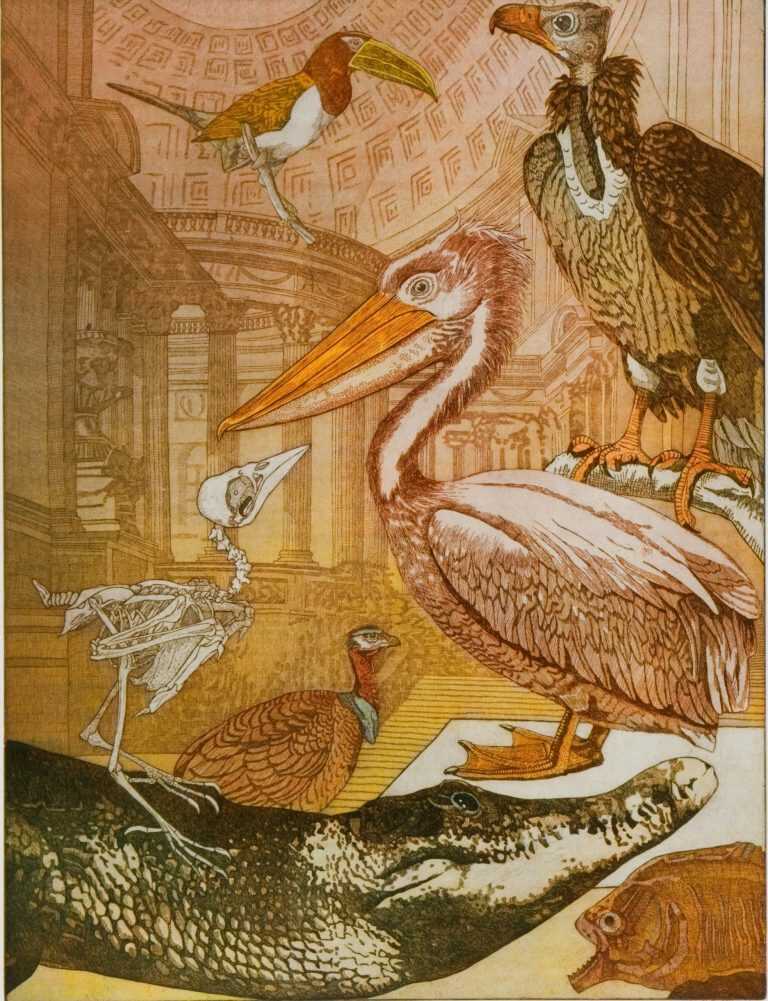
Annemarie Petri: Rara Avis
Press Release:
Childs Gallery is pleased to present Annemarie Petri: Rara Avis, an exhibition revealing the rare and extraordinary talent of the Hague-based Dutch artist. The show includes prints from several of Petri's varied imaginative series, including Natural Sciences, Atlantis, Genesis, Invisible Cities, and City and Time. Petri's fantastical prints delve into the in-between and out-of-place, considering the interconnectivity of timelines and how we decide to approach ourselves therein.
Petri's Natural Sciences etchings explore the world of hodgepodge curiosity cabinets, obscure museums, and esoteric studies, imagining eclectic collections of flora and fauna from a bygone age. Prints from her Atlantis series envision a submerged fantasy world at the bottom of the ocean, and her Genesis etchings depict her personal vision of the story of creation.
The colorful prints of Petri's Invisible Cities (titled after Italo Calvino's novel of the same name) explore civilizations that exist only in the artist's imagination - built and progressed through thought and circumstance rather than traditional means. Finally, the exhibition also includes examples of Petri's City and Time monoprints, a thematic continuation of the Invisible Cities series. These unique works explore continuous change and the passage of time, using multiple etching plates to layer and intertwine images of the past, present, and future into converging realities of ethereal realms.
Annemarie Petri: Rara Avis will be on view in our upstairs print department April 18 through June 1, 2025.
Included Works
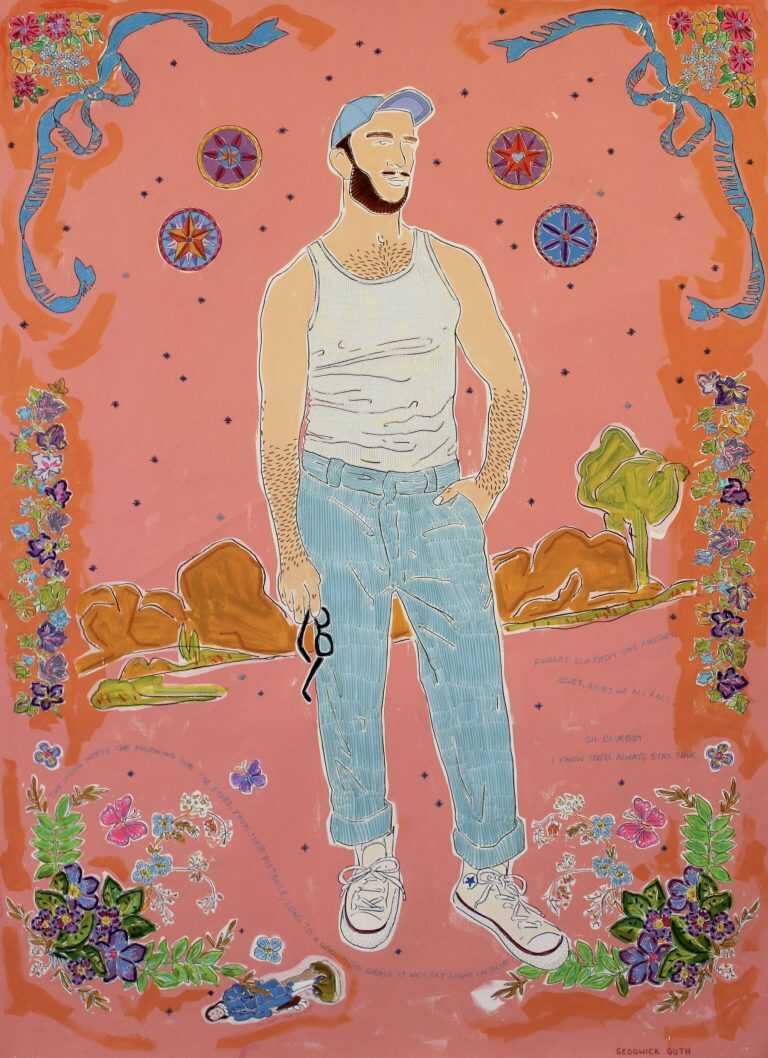
Sedgwick Guth: A Keeper of Lost Constellations (Glass River Ahead)
Press Release:
Art doesn't just appear like a star in the night sky - it's built, stitched, and layered with intention. Sedgwick Guth's practice is a conversation between tradition and reinvention, personal identity and collective mythology. In A Keeper of Lost Constellations (Glass River Ahead), the artist interweaves traditional Pennsylvania Dutch craft with contemporary questions of self, establishing a visual personal folklore resplendent with mystical embellishments, celestial signs, and saturated hues. Guth reinterprets the customary techniques and symbols of his cultural background to include and dramatize queer narratives and voices in spaces from which they have traditionally been omitted. Through color, embroidery, and texture, Guth explores vulnerability and self-expression, creating gentle yet vibrant spaces for all to exist and be beautiful in their own right.
Guth's mixed media paintings are informed by his heritage as Pennsylvania Dutch – an ethnic group of peoples descended from immigrants hailing from regions in Germany, France, and Switzerland. The Pennsylvania Dutch developed the rich, highly elaborate illuminated folk art of fraktur, which incorporates common artistic motifs such as birds, hearts, and flowers alongside written text in calligraphic and gothic script. Guth's work alludes to this style, while simultaneously applying its heteronormative and protestant symbolism to queer existence and relationships. He includes queer men (cis, trans, and those who co-identify as non-binary) alongside imagery and customs which had not been constructed to include them. His use of embroidery is a further nod to Pennsylvania craft and tradition such as taufschein frakturs (birth announcements) and mourning embroideries from the 17th through 19th centuries. Guth also employs the folk mysticism of hexology – the spiritual practice of creating hex signs as physical markers for healing spells and curses – throughout the work as protective embellishments threaded into each piece.
Reimagining these traditions, Guth weaves new worlds around his interest in astrology, constellations, and mythology, using upcycled materials in his work to process and question his own navigation through a 21st century world of technological pressures including social expectations, romantic and platonic love, sexual capital, spiritualism, and the definition of family. His models are based on those in his orbit, often fellow creatives, people Guth has interacted with or simply caught his eye via an intriguing pose. Grouped together or posed separately, their interaction is suggested but ultimately left up to the viewer – simultaneously connected and isolated, much like the performative curation of our modern relationships. These works intertwine Guth's own personal mythology with the perceived narratives created by his audience. Guth thus imagines his paintings as the story of the 'everyman,' with models as proxies amongst flowers, stars, and mystical symbols, ready to be interpreted and experienced in whatever way is deemed fit.
Sedgwick Guth: A Keeper of Lost Constellations (Glass River Ahead) journeys through mystical spaces of embroidery, color, and esoteric traditions. The exhibition is on view March 14 through May 18, 2025. An opening reception with the artist in attendance will be held Friday, March 14, 6-9pm.
Included Works
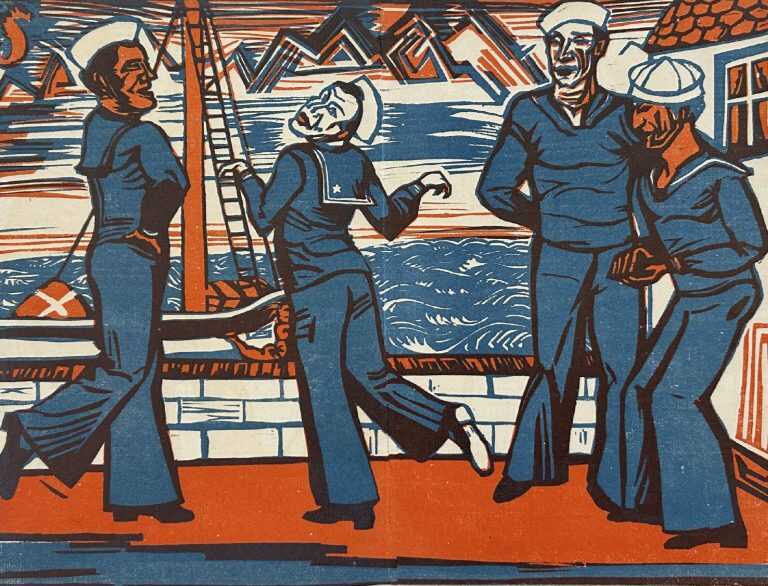
Hello Sailor!
Press Release:
The visage of the able-bodied mariner is prevalent throughout art history canon, from ancient reliefs of naval warfare to modern propaganda posters. Our contemporary image of the uniformed sailor becomes more ubiquitous from the 18th century onwards with dashing portraits of sea captains, handsome wartime heroes, and cavorting seamen on shore leave. Hello Sailor! celebrates these many iterations of mariner imagery, across various media including prints, paintings, photography, and sculpture. Works in the exhibition span from the early 19th century to the present, capturing the evolving sailor imagery of the past two hundred years.
Highlights in the exhibition will include a 1930 color woodcut by German artist Erich Heckel depicting a quartet of sailors theatrically dancing at port, an 1805 painting featuring a handsomely attired British Naval Lieutenant, Bernard Brussel-Smith's stark black and white prints of rakish seamen in seedy bars, Dudley Vaill Talcott's modernist sculptural interpretations of rugged Norwegian fisherman, and 20th century beefcake photographs with models cheekily festooned in nautical attire.
Hello Sailor! is on view in our upstairs gallery February 14 through April 6, 2025.
Included Works
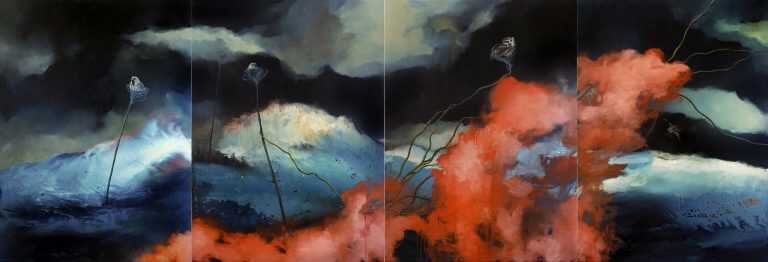
Making Waves II: Resa Blatman, Joan Hall, & Karen Lee Sobol
Press Release:
In the spring of 2020, Childs Gallery announced the opening of Making Waves, an exhibition featuring the work of Resa Blatman, Joan Hall, and Karen Lee Sobol, three artists using their work to create art that addresses humankind's relationship to the ocean. Just as the exhibition was set to debut, the world was shut down due to the Covid-19 pandemic, and subsequently, Making Waves was only ever glimpsed on the Childs Gallery website, YouTube videos, or through select appointments.
Now, nearly five years later, Making Waves II reimagines the original exhibition with new artwork from Blatman, Hall, and Sobol, alongside select pieces from the 2020 show. A dynamic staging of multimedia work with powerful messaging, Making Waves II advocates for greater awareness of our climate crisis in the hopes of engendering ideas for change.
As the largest habitat on our planet, the Earth's oceans are vast ecosystems of which only a small fraction has been explored. Today, our oceans are greatly endangered by human activity, and recent studies have found that approximately 8 million metric tons of plastic enter the ocean on an annual basis. As this crisis escalates, climate change art bridges the scientific and visual, making hard data more accessible through an emotional response to art. By helping us process this information, climate change art seeks to affect meaningful changes between humans and their environment.
Resa Blatman's paintings consider humankind's place within a vast universe and our ultimate insignificance, versus the quiet strength and influence of tiny things. For several years her work has centered around the shifting climate and catastrophes caused by an overheating planet, juxtaposing the image of a wounded Earth with the resilience of seemingly insignificant plants and animals. These flora and fauna, small birds and marsh grass, are the heroes of Blatman's works, surviving within a tumultuous present or an uncertain future. Though portending of an ominous fate, Blatman's paintings are strikingly beautiful, using nuanced, obsessive mark-making to compose scenes that are contrary and compelling – expressing reverence for the natural world through invoking humanity's conflict with it. Blatman explores themes of death, rebirth, unknowing, and mournfulness relating to our rapidly changing environment, but also ever present is joy, gratitude, compassion, and love for the Earth and each other.
An avid sailor, Joan Hall works tirelessly to promote marine advocacy through her art. From her home and studio in Jamestown, Rhode Island, Hall sees the effects of climate change firsthand. Non-native, invasive algae species and plastic pollution found in the waters of Narragansett Bay feature prominently in her large-scale mixed media installations. Hall focuses on the use of handmade paper to shape the undulating wave-like forms of her sculptural pieces, while also incorporating various printmaking techniques, using plastics and detritus found on local beaches to create collagraph plates. The resulting works are a beautiful but brutal reminder of humankind's role in widespread oceanic pollution. Ever experimenting with new and unusual materials, Hall's recent work, such as Washed Up, has seen the more prevalent use of glass as the primary medium. Replicating the delicate ethereality of aqueous jellyfish, the piece also incorporates Hall's trademark handmade paper, alongside metal, and ashes from the artist's late husband – signifying both personal and environmental loss. Ultimately, Hall's goal is to initiate a conversation about the deterioration of our greatest resource – water. The intensive process and scale of Hall's work commands attention, confronting the audience with beauty that conceals ecological trouble.
Karen Lee Sobol is determined to remain an optimist in the face of the devastating effects of climate change. A global health advocate since the 1960s, Sobol intuits her belief in humanity's role as both benefactors and stewards of the environment into her paintings. Sobol claims to paint like she swims, with a physicality that imbues expressively gestural energies in her work, mimicking the ripples and swells of oceanic waters, the flickers and movement of aquatic creatures. Focusing on nature's inherent beauty, Sobol's work is resplendent with vibrant colors and bold strokes, hiding human and animal figures within her playful lines and splatters. Sobol's latest series, Nobody's Nomads, emerged during the Covid-19 pandemic. Working at home in a makeshift studio, the artist painted large scale canvases that speak to the increasing cascade of environmental refugees and impending challenges to our biosphere. Though the presence of escalating environmental degradation pervades Sobol's works, there is always light and hope. The juxtaposition is meant to invoke a protective instinct and call to action - a plea for help from Mother Nature herself.
Please join us for an opening reception with the artists, Friday, January 17, 6-8pm. Making Waves II will be on view in our main gallery space January 17 through March 9, 2025.

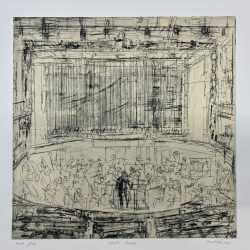
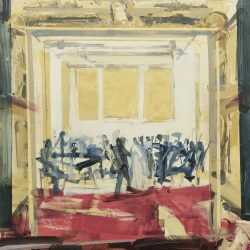

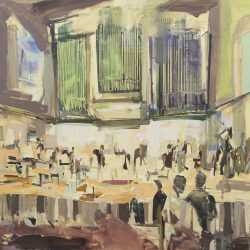
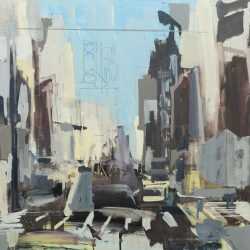
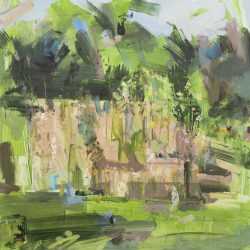
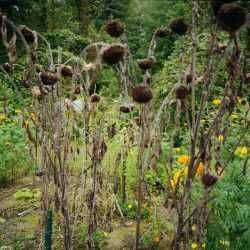
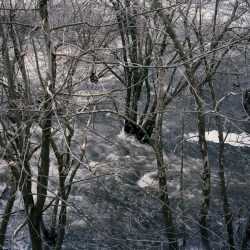


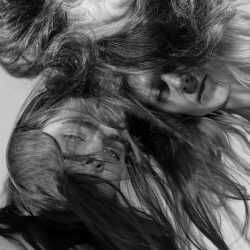
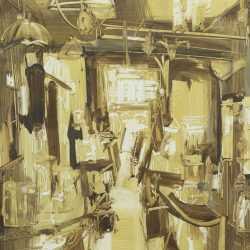
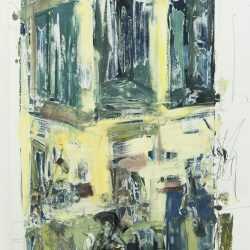

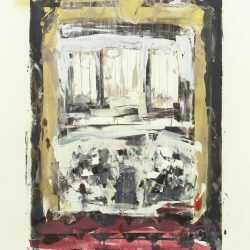
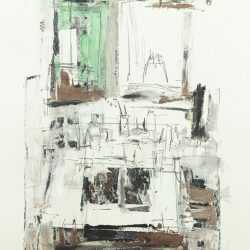
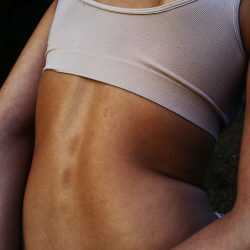
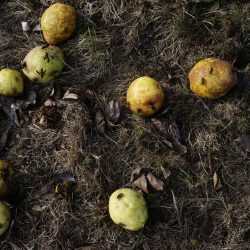



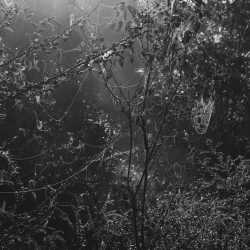
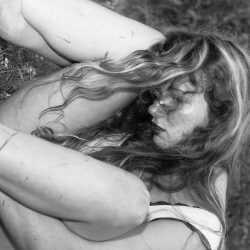
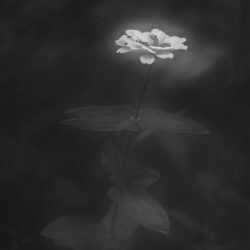
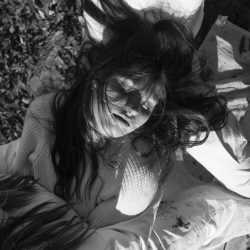
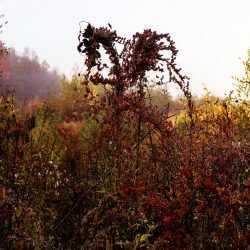
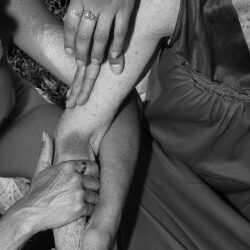
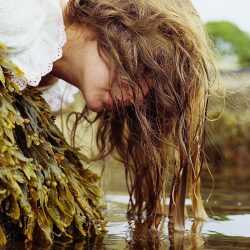
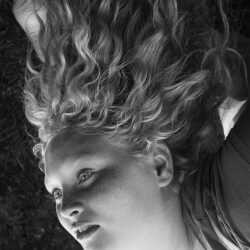
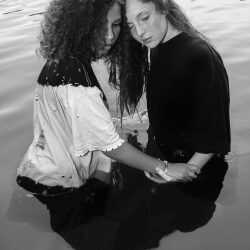



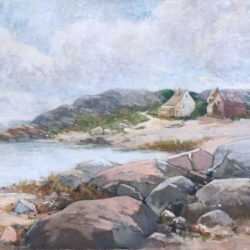











![Watercolor by Gertrude Beals Bourne: [High Street, Ipswich, Massachusetts], available at Childs Gallery, Boston](https://childsgallery.com/wp-content/uploads/gertrude-beals-bourne_high-street-ipswich-massachusetts_89-9-29_childs_gallery_48413-250x250.jpg)




![Watercolor by Gertrude Beals Bourne: [Marshes, Ipswich], available at Childs Gallery, Boston](https://childsgallery.com/wp-content/uploads/gertrude-beals-bourne_marshes-ipswich_childs_gallery_13749-250x250.jpg)
![Pastel by William Partridge Burpee: [Gloucester Harbor], available at Childs Gallery, Boston](https://childsgallery.com/wp-content/uploads/william-partridge-burpee_gloucester-harbor_childs_gallery_11396-250x250.jpg)
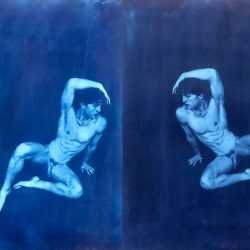


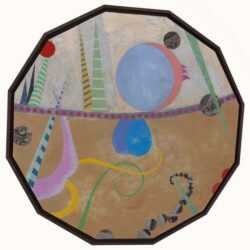


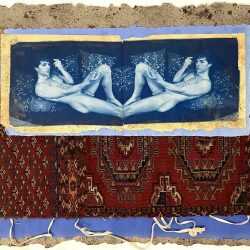
![Print by Don Joint: [Seated nude with felt and green residue], available at Childs Gallery, Boston](https://childsgallery.com/wp-content/uploads/don-joint_seated-nude-with-felt-and-green-residue_16-12-189_childs_gallery_48342-250x250.jpg)


![Print by Don Joint: [Reclining nude with felt and green residue], available at Childs Gallery, Boston](https://childsgallery.com/wp-content/uploads/don-joint_reclining-nude-with-felt-and-green-residue_childs_gallery_48340-250x250.jpg)
![Print by Don Joint: Night Clerk [It was my first job out of high school], available at Childs Gallery, Boston](https://childsgallery.com/wp-content/uploads/don-joint_night-clerk-it-was-my-first-job-out-of-high-school_16-12-199_childs_gallery_48309-250x250.jpg)




![Print by Don Joint: [The Sweetest rose only blooms a while], available at Childs Gallery, Boston](https://childsgallery.com/wp-content/uploads/don-joint_the-sweetest-rose-only-blooms-a-while_16-12-206_childs_gallery_48315-250x250.jpg)









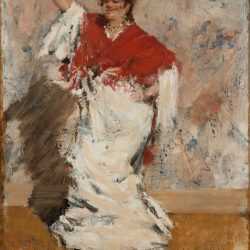
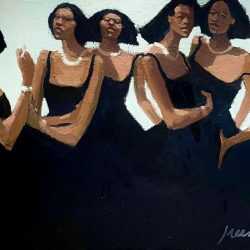
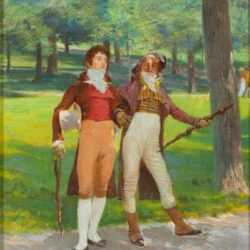
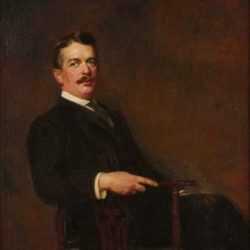
![Print by Katsushika Hokuyo: [One Thousand Years of the History of Flowers], represented by Childs Gallery](https://childsgallery.com/wp-content/uploads/katsushika_hokuyo__one_thousand_years_of_the_his_x339r_childs_gallery-1-250x250.jpg)
![Photograph by George Platt Lynes: [Chuck Howard Leaning Against a Wall], available at Childs Gallery, Boston](https://childsgallery.com/wp-content/uploads/george-platt-lynes_chuck-howard-leaning-against-a-wall_21-23-32_childs_gallery-250x250.jpg)
![Photograph by George Platt Lynes: [Chuck Howard and Fashion Model], available at Childs Gallery, Boston](https://childsgallery.com/wp-content/uploads/george-platt-lynes_chuck-howard-and-fashion-model_21-23-151_childs_gallery_48030-250x250.jpg)
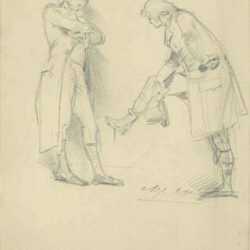
![Photograph by George Platt Lynes: [Woman in Dress Leaning Against Wall], available at Childs Gallery, Boston](https://childsgallery.com/wp-content/uploads/george-platt-lynes_woman-in-dress-leaning-against-wall_21-23-151_childs_gallery_48224-250x250.jpg)
![Photograph by George Platt Lynes: [Woman with Back Turned, Glowing], available at Childs Gallery, Boston](https://childsgallery.com/wp-content/uploads/george-platt-lynes_woman-with-back-turned-glowing_21-23-175_childs_gallery_48230-250x250.jpg)
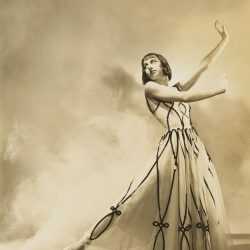
![Photograph by George Platt Lynes: [Woman in profile], available at Childs Gallery, Boston](https://childsgallery.com/wp-content/uploads/george-platt-lynes_woman-in-profile_21-23-188_childs_gallery_48227-250x250.jpg)
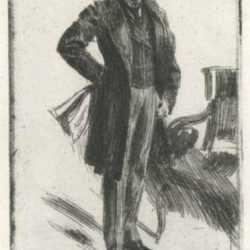
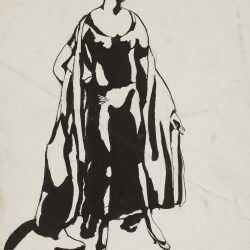
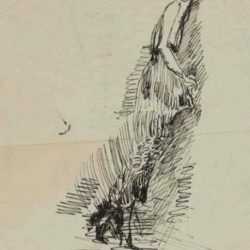
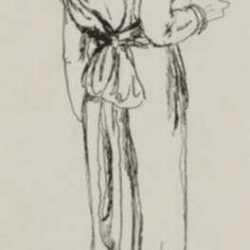



![Watercolor by Letterio Calapai: [Portrait of a Woman with Head in Hand], available at Childs Gallery, Boston](https://childsgallery.com/wp-content/uploads/letterio-calapai_portrait-of-a-woman-with-head-in-hand_bb1345-03_childs_gallery_48240-250x250.jpg)



![Watercolor by Letterio Calapai: [Two Women], available at Childs Gallery, Boston](https://childsgallery.com/wp-content/uploads/letterio-calapai_two-women_bb1345-06_childs_gallery_48236-250x250.jpg)
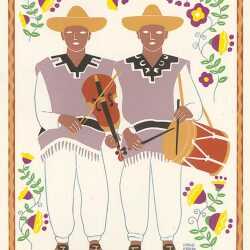


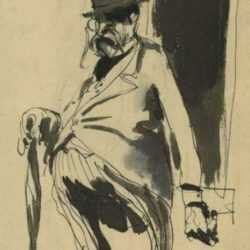


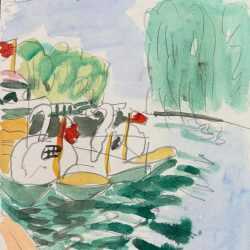
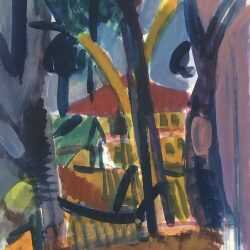
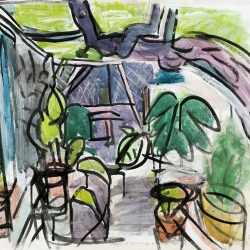
![Watercolor by Jason Berger: [Seated Woman], available at Childs Gallery, Boston](https://childsgallery.com/wp-content/uploads/jason-berger_seated-woman_23-08-359_childs_gallery_47513-250x250.jpg)
![Watercolor by Jason Berger: [Garden Path, Boston Public Garden], available at Childs Gallery, Boston](https://childsgallery.com/wp-content/uploads/jason-berger_garden-path-boston-public-garden_childs_gallery_9428-250x250.jpg)
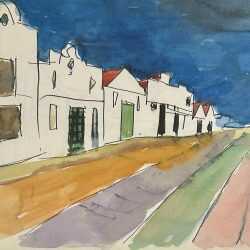
![Watercolor by Jason Berger: [Landscape with Trees], available at Childs Gallery, Boston](https://childsgallery.com/wp-content/uploads/jason-berger_landscape-with-trees_23-08-710_childs_gallery_48172-250x250.jpg)
![Watercolor by Jason Berger: [Interior – Algarve, Portugal], available at Childs Gallery, Boston](https://childsgallery.com/wp-content/uploads/jason-berger_interior-8211-algarve-portugal_23-08-796_childs_gallery_48182-250x250.jpg)
![Watercolor by Jason Berger: [Brookline Landscape], available at Childs Gallery, Boston](https://childsgallery.com/wp-content/uploads/jason-berger_brookline-landscape_23-08-795_childs_gallery_48180-250x250.jpg)
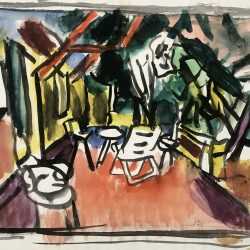
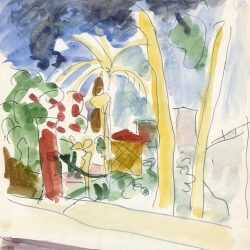
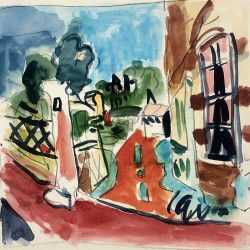
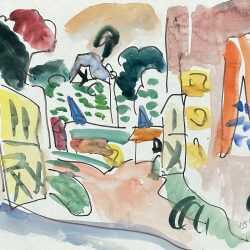
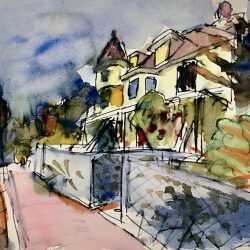
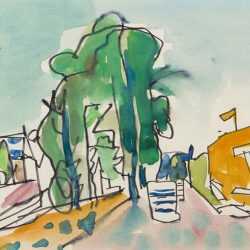
![Watercolor by Jason Berger: [Portuguese Town], available at Childs Gallery, Boston](https://childsgallery.com/wp-content/uploads/jason-berger_portuguese-town_23-08-794p_childs_gallery_48178-250x250.jpg)
![Watercolor by Jason Berger: [View through Window], available at Childs Gallery, Boston](https://childsgallery.com/wp-content/uploads/jason-berger_view-through-window_23-08-792_childs_gallery_48174-250x250.jpg)
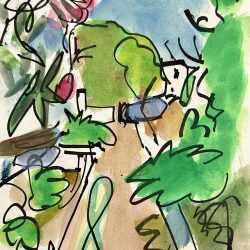
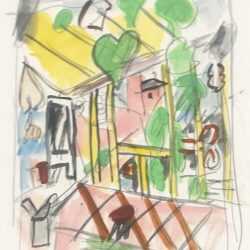
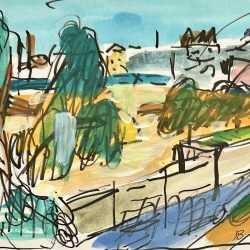
![Watercolor by Jason Berger: [Landscape with Gate], available at Childs Gallery, Boston](https://childsgallery.com/wp-content/uploads/jason-berger_landscape-with-gate_23-08-801p_childs_gallery_48192-250x250.jpg)
![Watercolor by Jason Berger: [Abstract Landscape], available at Childs Gallery, Boston](https://childsgallery.com/wp-content/uploads/jason-berger_abstract-landscape_23-08-798_childs_gallery_48186-250x250.jpg)
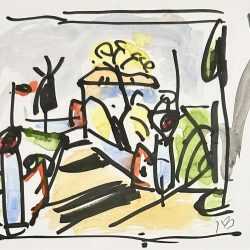





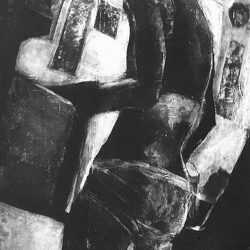
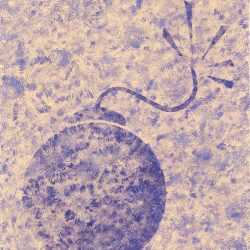
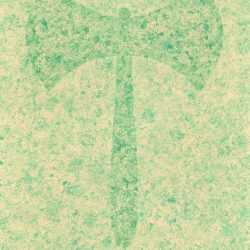
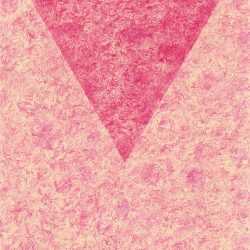


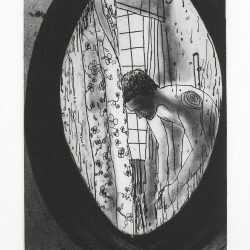
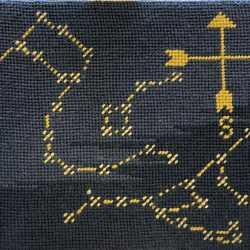
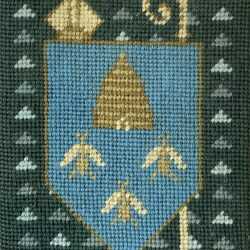
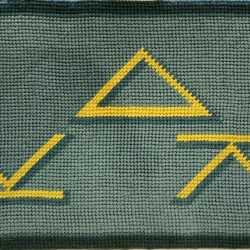
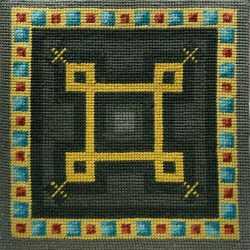

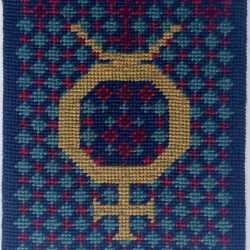

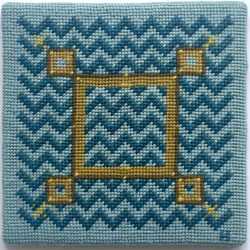


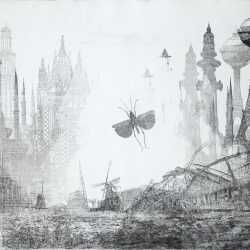
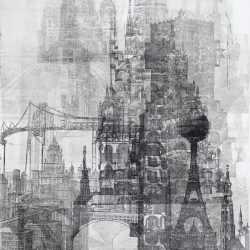
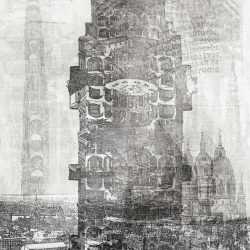
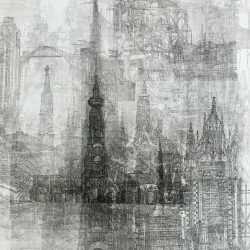
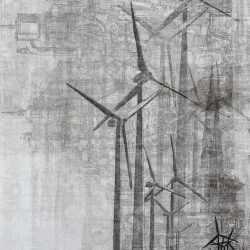
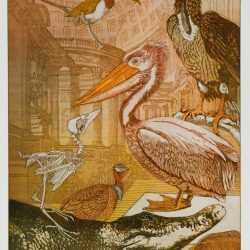
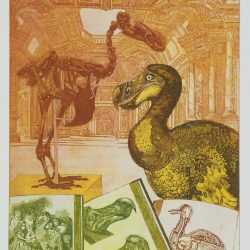
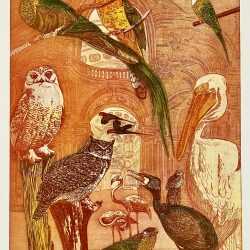
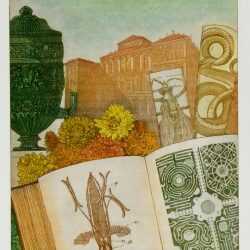
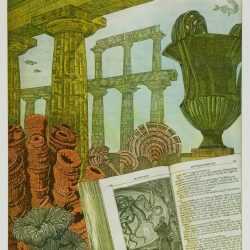
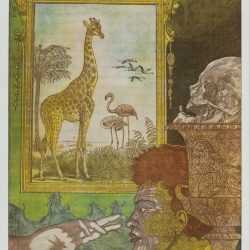
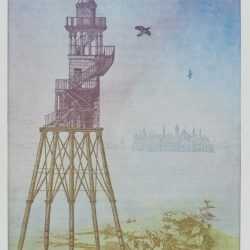
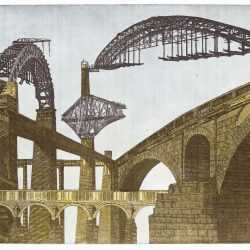
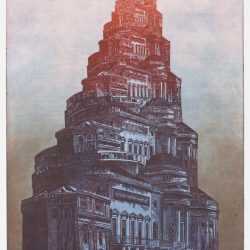
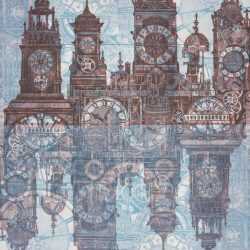
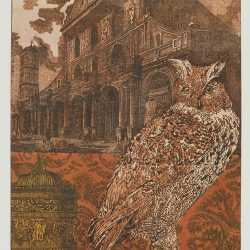
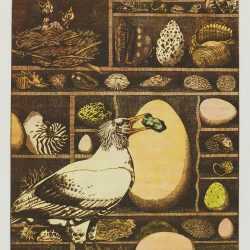
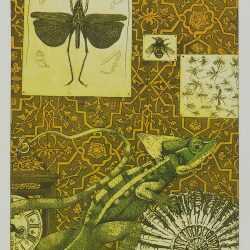
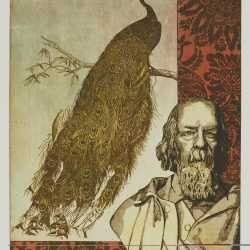
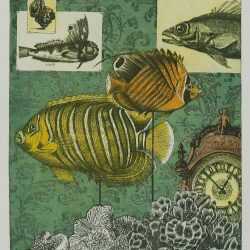
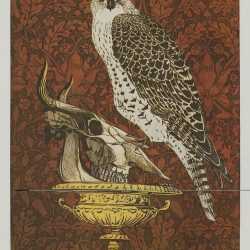
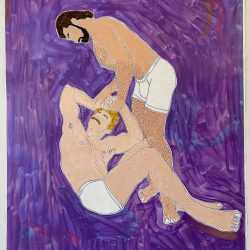
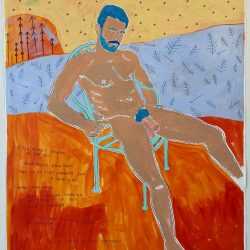
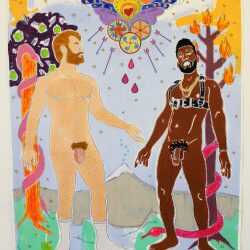
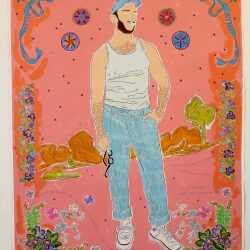
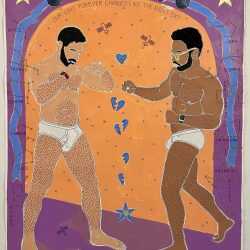
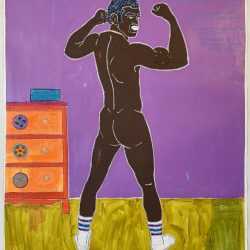
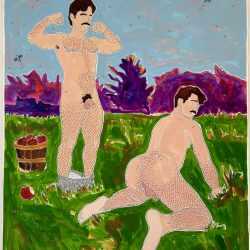
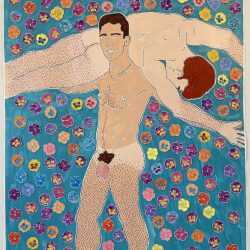
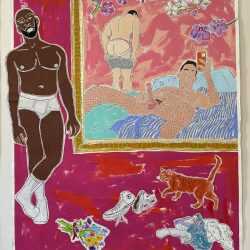
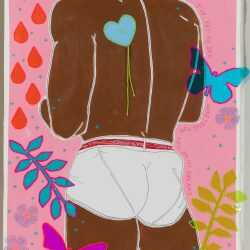
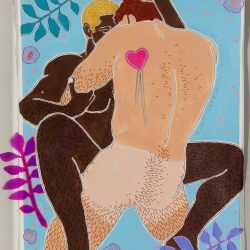
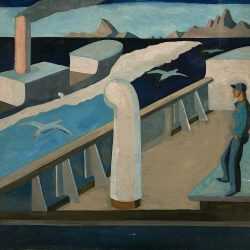
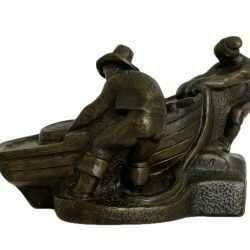
![Drawing By Rockwell Kent: [the Lookout, Related Studies] At Childs Gallery](https://childsgallery.com/wp-content/uploads/rockwell_kent_the_lookout_related_studies_08-35-04_childs_gallery-250x250.jpg)
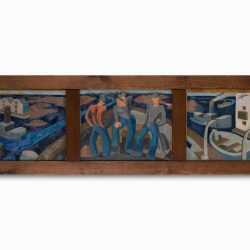
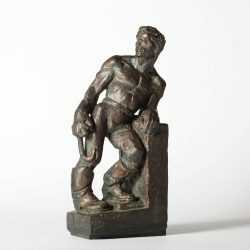
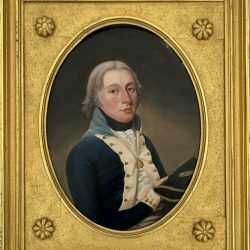
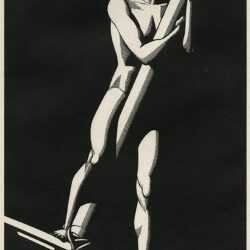
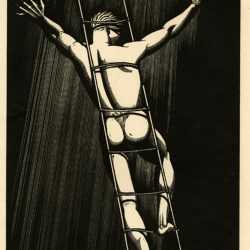
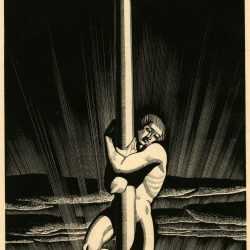
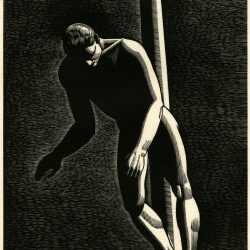
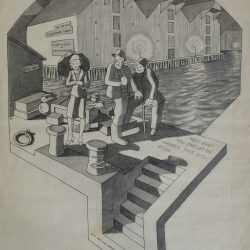
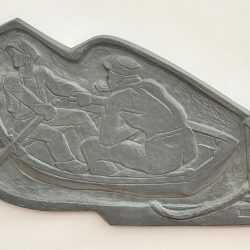
![Drawing by Dudley Vaill Talcott: [Sailor and Woman Embracing], available at Childs Gallery, Boston](https://childsgallery.com/wp-content/uploads/dudley-vaill-talcott_sailor-and-woman-embracing_17-20-03r_childs_gallery_47857-250x250.jpg)
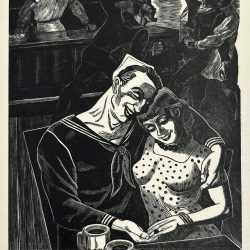
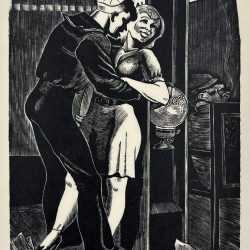
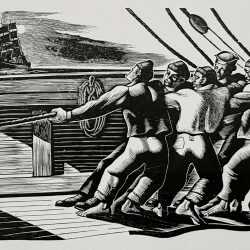
![Watercolor by Bryson Burroughs: [Sailboat on Open Water], available at Childs Gallery, Boston](https://childsgallery.com/wp-content/uploads/bryson-burroughs_sailboat-on-open-water_cgl29216-238_childs_gallery_47864-250x250.jpg)
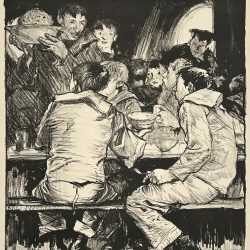
![Drawing by Jane Peterson: [Man and Sailor Dining], available at Childs Gallery, Boston](https://childsgallery.com/wp-content/uploads/jane-peterson_man-and-sailor-dining_-cgl54384-22_childs_gallery_47880-250x250.jpg)
![Photograph by Alonzo Hanagan (Lon of New York): [Tommy Hume, Tattooed Sailor], available at Childs Gallery, Boston](https://childsgallery.com/wp-content/uploads/alonzo-hanagan-lon-of-new-york_tommy-hume-tattooed-sailor_21-24-047_childs_gallery-250x250.jpg)
![Photograph by Tom Nicholl (Scott of London): [Unidentified Model as a Sailor], available at Childs Gallery, Boston](https://childsgallery.com/wp-content/uploads/tom-nicholl-scott-of-london_unidentified-model-as-a-sailor_21-24-023_childs_gallery-250x250.jpg)
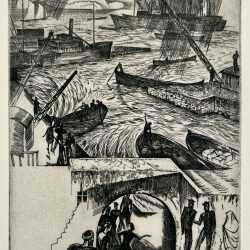
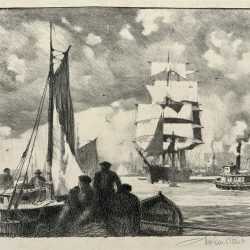
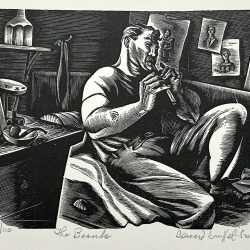
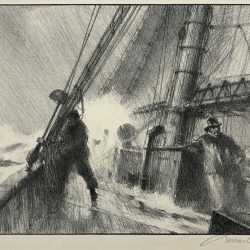
![Photograph by Bob Mizer: [Model dressed as sailor 1], available at Childs Gallery, Boston](https://childsgallery.com/wp-content/uploads/bob-mizer_model-dressed-as-sailor-1_23-23-12_childs_gallery_47890-250x250.jpg)
